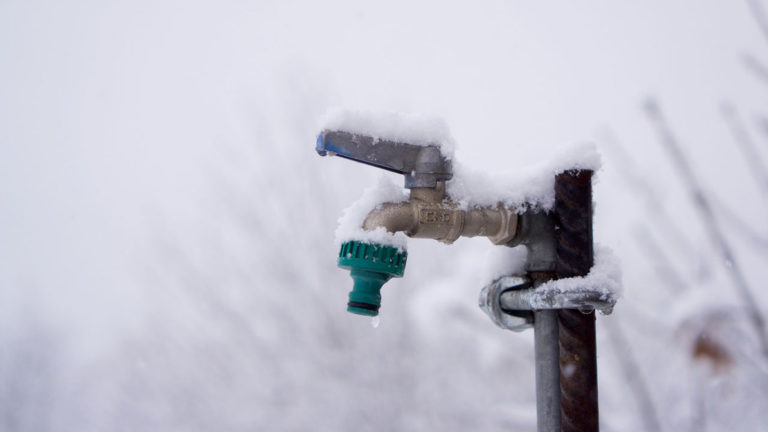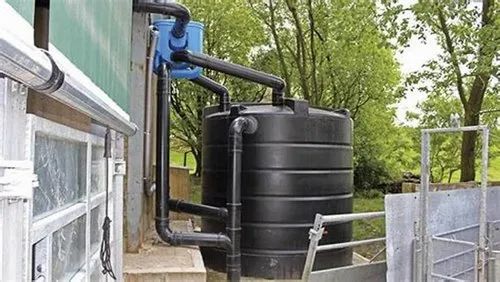Installing a graywater system can be an exciting and rewarding project for any homeowner looking to conserve water and reduce their environmental impact.
With the right knowledge and tools, you can build your own DIY graywater system that will help collect and reuse greywater from sinks, showers, and washing machines, saving you money on your water bill while also reducing stormwater runoff and pollution in our watersheds.
Whether you’re looking to retrofit an existing home or install a system during new construction, this guide will walk you through the process step-by-step, covering everything from design considerations to materials selection to installation best practices.
Let’s dive into the world of graywater and explore how easy it is to start collecting and reusing this valuable resource!
Understand the laws and regulations
Check with your local government to see if graywater reuse is legal in your area and what regulations you need to follow. Some states and localities have specific rules and permits required for graywater systems.
Check with your local government to determine if graywater reuse is legal in your area and familiarize yourself with any regulations that you need to follow.
Some states and localities have specific rules and permits required for graywater systems, such as Texas, Arizona, and California, so it is important to familiarize yourself with these requirements.
Obtaining the necessary permits and following the regulations is essential to ensure a successful graywater system and avoid any legal issues.
Failure to comply with local regulations can lead to fines or even prohibit the use of graywater in your area, which can negate the benefits of this sustainable practice.
Assess your needs
Determine how much water you need to collect and treat. This will depend on the number of people in your household, your water usage, and the climate you live in.
To determine how much water you need to collect and treat, you must first assess your needs.
This involves evaluating the number of people in your household, your water usage, and the climate you live in.
For example, if you live in a hot and dry climate, you may need to collect and treat more water to account for the increased evaporation rate.
If you have a large household, you will need to collect and treat more water to meet your household’s needs.
Start by calculating your daily water usage, including water used for drinking, cooking, showering, and flushing the toilet.
Consider implementing water-saving measures such as low-flow showerheads and toilets to reduce your water usage.
Once you have a sense of your daily water needs, you can determine how much water you need to collect and treat.
Keep in mind that collecting and treating water can be a complex process, so it’s important to research and explore your options carefully to find the best solution for your needs.
Choose a collection method
Decide how you will collect and transport the graywater from your home to the treatment system. This can be done through pipes, gutters, or other collection methods.
When choosing a collection method for graywater, there are several options to consider.
Pipes are a common choice, as they provide a convenient and direct route for transporting graywater from your home to the treatment system.
Gutters can also be used, particularly if you have a flat roof or other hard-to-reach areas.
Another option is to use a rainwater harvesting system, which can collect and store graywater along with rainwater and provide a secondary source of water for non-potable uses.
Regardless of the collection method you choose, it’s important to ensure that the system is properly sized and configured to meet your home’s needs.
This will depend on factors such as the number of occupants, water usage patterns, and the type of treatment system you’re using.
It’s essential to maintain the collection system regularly to prevent clogs and ensure proper function.
In terms of transporting the graywater, it’s important to use a hose or pipe that is resistant to corrosion and durable enough to withstand the weight of the water.
Stainless steel or PVC pipes are good options, as they are resistant to corrosion and can withstand the pressure of the water.
You should use fittings and valves that are specifically designed for use with graywater to ensure proper connection and flow.
Overall, choosing the right collection method and properly transporting graywater is important for the success of your graywater system.
By carefully considering your options and maintaining the system regularly, you can enjoy a reliable source of water for non-potable uses while also reducing your water consumption and waste.
Select a treatment method
Determine which treatment method is best for your graywater system. Common methods include biofilter systems, membrane bioreactors, and ponds.
Selecting a treatment method for your graywater system is a important decision that requires careful consideration of several factors.
One popular method is the biofilter system, which utilizes a combination of plants and microorganisms to break down wastewater.
This method is particularly effective for treating graywater with high levels of nutrients and organic matter.
Another option is the membrane bioreactor (MBR), which uses microfiltration or ultrafiltration membranes to remove suspended solids and pathogens from the graywater.
This method is ideal for systems that require a high level of treatment and disinfection.
Ponds are a simple and cost-effective option for treating graywater.
However, they are not as effective at removing suspended solids and pathogens as the other two methods, and may require additional treatment steps before the water can be safely reused.
By carefully evaluating your graywater system’s specific needs and constraints, you can select the most appropriate treatment method and ensure that your system operates effectively and sustainably.
Plan the system layout
Sketch out a layout of your graywater system, taking into account the collection, transportation, and treatment components.
Plan the system layout: Sketch out a layout of your graywater system, taking into account the collection, transportation, and treatment components.
Begin by identifying the source of the graywater, such as the bathroom, laundry, and kitchen sinks, showers, and washing machines.
Next, determine the most effective and efficient way to collect and transport the graywater to the treatment system.
This may involve installing a network of pipes and valves to direct the water flow.
Once the water reaches the treatment system, consider the type of treatment technologies you plan to use, such as a septic system, a constructed wetland, or an aeration tank.
Based on these factors, create a detailed layout of your graywater system, including the location of the collection and transportation components, the treatment technologies, and the distribution system for the treated water.
This layout will serve as a roadmap for your graywater system project, ensuring that all components work together seamlessly and effectively.
Remember to consult with local authorities and professionals to ensure your system complies with all relevant regulations and standards.
Build the collection and transportation infrastructure
Install the pipes, gutters, and other infrastructure needed to collect and transport the graywater from your home to the treatment system.
To effectively build the collection and transportation infrastructure for your graywater system, you’ll need to install a network of pipes, gutters, and other infrastructure to collect and transport the graywater from your home to the treatment system.
This may include
* Piping: Use high-quality, durable pipes that are resistant to corrosion and can withstand the pressure and flow rates of the graywater.
Common materials for graywater piping include PVC, CPVC, and stainless steel.
* Gutters: Install gutters around the perimeter of your home to collect rainwater and other sources of graywater.
Make sure that the gutters are properly sloped and securely attached to the roof and downspouts.
* Downspout Connections: Connect the downspouts from the gutters to the piping system.
Make sure the connections are secure and watertight.
* Pumping System: If your graywater system requires a pumping system to transport the water to the treatment system, select a pump that is suitable for the volume and pressure of the graywater.
Install the pump in a location that is easily accessible and maintainable.
* Treatment System Connection: Connect the piping system to the treatment system, ensuring a watertight connection.
Verify that the treatment system is designed to handle the quantity and quality of graywater generated by your home.
By building the collection and transportation infrastructure, you’ll be able to effectively collect and transport graywater from your home to the treatment system, paving the way for a more sustainable and environmentally friendly water management system.
Construct the treatment system
Build the treatment system using the selected method, following the manufacturer’s instructions and local building codes.
To construct the treatment system, you will need to carefully select the appropriate method for your specific water treatment needs, taking into account factors such as the size of your water storage tank, the type of water you are treating, and any local regulations or guidelines.
Once you have selected the method, you will need to follow the manufacturer’s instructions for assembly and installation, ensuring that all components are properly connected and functioning correctly.
It is essential to adhere to local building codes and regulations when constructing the treatment system, as these codes are in place to ensure the safety and integrity of the system and the water it treats.
This may include obtaining any necessary permits or approvals, and ensuring that the system is properly grounded and electrically isolated.
By carefully constructing the treatment system using the selected method and following all relevant guidelines and regulations, you can ensure that your water treatment system is safe, effective, and meets all necessary standards.
Test and maintain the system
Test the system to ensure it is functioning properly and treating the graywater to safe standards. Maintain the system regularly to ensure it continues to function properly.
Testing and maintaining a graywater system is important to ensure that it is functioning properly and treating the graywater to safe standards.
This involves regularly checking the system’s components, such as the gutters, downspouts, and treatment units, to ensure they are free from blockages and malfunctions.
It is also important to test the graywater quality regularly, using a range of parameters such as pH, temperature, and turbidity, to ensure it meets safe standards for use in irrigation and flushing.
Regular maintenance, such as cleaning and replacing filters, and inspecting and repairing any damaged or worn-out components, is also essential to ensure the system continues to function properly over time.
By implementing a regular testing and maintenance schedule, homeowners can ensure their graywater system is functioning at its best, providing a safe and efficient means of managing household wastewater.
Want More? Dive Deeper Here!
Hey there! If you’re the type who loves going down the rabbit hole of information (like we do), you’re in the right spot. We’ve pulled together some cool reads and resources that dive a bit deeper into the stuff we chat about on our site. Whether you’re just killing time or super into the topic, these picks might just be what you’re looking for. Happy reading!






